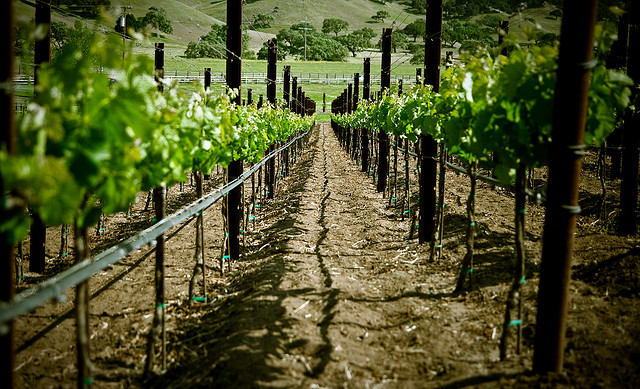Most people could get used to 70-degree temperatures in the dead of winter, thanks to climate change.
But even the slightest temperature variations can have huge ripple effects on many of life’s small pleasures, including wine.
Wine and grapes are dependent on their climate; growing conditions dictate varieties, styles and flavors.
As global climate change continues to create erratic temperature changes, wine producers will be forced to relocate to avoid dwindling yields. And new growing conditions mean winemakers and consumers will need to prepare for changes in alcohol content, varieties and even the taste of the wines they know and love.
Fluctuating temperatures disrupt grape production.
Winemakers across the world are already facing the realities of climate change. Along the North Coast of California, record high temperatures have caused bud break that’s two months premature. Warmer temperatures like these awaken plants from their winter dormancy—putting growers at a severe risk of reduced yield if temperatures drop again.
At St. James Winery in Missouri, we’ve seen a dramatic shift in harvest dates over the last 12 years. In 2012, we began harvesting on July 20, the earliest date in the winery’s 45-year history; other years, we started as late as August 18. Last winter, extreme lows and unexpected frosts late in the season killed 20 percent of our bud wood.
Unfortunately, the temperature extremes disrupting our crops today will create long-term problems. We could see drastic declines in crop yield in regions around the world, including Bordeaux, Rhone, California, Australia and Tuscany. One climate model from the Science World Report estimates a 70 to 85 percent decrease in yield for those regions by 2050.
To protect their yields, winemakers have started to explore new regions and growing techniques. Bodegas Torres, a Spanish winemaker, is moving vineyards to the mountains; French champagne makers are purchasing land in southern England, while Australian winemakers are shifting vineyards south to Tasmania. Some producers have even nixed grape varieties that are synonymous with a particular region in favor of less traditional varieties.
New soil and grape varieties might not sound like dramatic changes, but they will translate into new flavors—and more expenses—that will affect growers and consumers.
Climate change will Impact your wine experience in six ways.
As vineyards move to different regions, producers will have to invest in new growing and production techniques. Consumers may not notice the effects for five or six years, but these changes will have a profound impact on our individual wine experiences.
Here’s what wine fanatics should expect:
>>> Unfamiliar regions: Larger, well-financed companies have already begun planting in new areas, so wine drinkers will likely see their favorite grapes coming from unfamiliar regions. Instead of a California Merlot, for example, they might have to purchase a Washington Merlot.
>>> Price surges: The costs of purchasing new land, moving production and investing in research and innovation will place a huge burden on growers and producers. As more winemakers from France and California snatch up land in Oregon and Washington, real estate prices will only continue to rise. And as vineyards lose crops to weather extremes, consumers will likely have to front the costs.
>>> More red wines: Red wines need more time and sun to develop, so they grow more easily in warmer climates. White wines, on the other hand, have a hard time growing in hot regions and often lose much of their flavor and structure in overly hot seasons.
>>> Higher alcohol content: Extra time in the sun means more sugar, which equates to more alcohol when the wine ferments. In fact, California Zinfandels are 30 percent more alcoholic than they were in 1990. Bordeaux contained around 16 percent alcohol in 2010, up from 12.5 percent from 1982.
>>> New varieties: Researchers around the world are developing grapes that can resist various climate challenges and varietal defects. As their work continues, new varieties will line grocery store shelves.
>>> Changes in taste: Growers will continue to produce the same grape varieties, but they will develop different flavors under new growing conditions, translating into fewer traditional flavors in the cellar.
As climate change continues to disrupt wine production—and alter the wine itself—winemakers will have to embrace fruit that can adjust to extreme temperature changes. Consumers will also need to accept the regional and style differences that will soon become reality.
Although no one can predict the future of the wine industry, one thing is clear: both winemakers and wine drinkers will have to adapt.
Relephant:
Mindful Drinking? (Vajrayana tradition: Alcohol & Buddhism)
Author: Andrew Meggitt
Editor: Catherine Monkman
Photo: Cielodlp/Flickr










Read 0 comments and reply